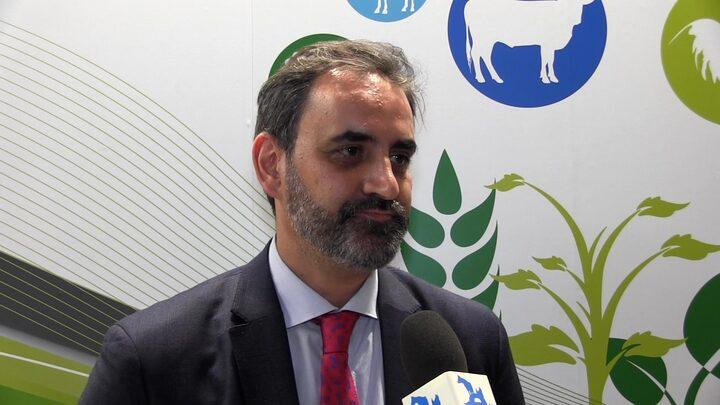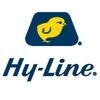Explore all the information on
Poultry litter
Poultry litter is the mix of bedding material, manure and feathers that result from intensive poultry production. This includes litter from meat chickens (broilers), egg-laying chickens (layers) kept under barn conditions, turkeys, ducks and quails. Poultry bedding material consists of wood shavings, pine straw, peanut hulls, and other absorbent dry low-cost materials and is another possible source of pathogenic contamination for poultry. It is generally recommended that farmers keep litter as dry as possible, replace the top layer of the litter with a new one, and apply acid-based litter amendments. Keeping litter dry is a critical part of overall management on every poultry farm. Litter conditions influence bird performance, which in turn affects profits of growers and integrators. Dry litter helps control ammonia levels, provides a healthy flock environment, and reduces condemnations due to hock and footpad burns and breast blisters.
Introduction Alphitobius diaperinus (Panzer), popularly known as "cascarudo" [thick-shelled beetle] (Rohde et al., 2006), belongs to the phylum Arthropoda, class Insecta, order Coleoptera and Family Tenebrionidae (Paiva, 2000). It is a pest of stored grain that has adapted to poultry houses (Vaughan et al ., 1984; Arends, 1987; Mac Allister et al ., 1995). It affects poultry...
Comments : 0
Recommendations: 1
Abstract Poultry litter becomes wet when the rate of water addition (urine/faeces/spillage) exceeds the rate of removal (evaporation). Anti-nutritional factors, toxins, pathogens and nutrient imbalances may cause wet litter directly by altering normal digestive physiology or indirectly by disturbing normal gut ecology. Poor quality ingredients and those with excess oligosaccharides or minerals can cause a...
Comments : 2
Recommendations: 0
Alphitobius diaperinus is one of the most predominant poultry litters inhabiting insect species all over the world. This insect has been shown to be able of transmitting a large variety of poultry pathogenic organisms (Newcastle virus, IBD virus, influenza virus, salmonella spp, clostridium perfergins and aspergillus spp). In this experience, we have studied the spatial distribution and the population fluctuation of Alphitobius diaperinus in a broiler house...
Comments : 1
Recommendations: 0
ABSTRACT : The solid separation techniques indicate that it can promote a support in anaerobic biological process. This trial was realized in FCAV-UNESP, Jaboticabal, Brazil, in Rural Engineering Department. For this trial two tests were developed, using broiler litter water diluted and separated in a 3mm mesh screen: the treatments consisted in (1kg) broiler litter diluted in (2kg) of water, (1kg) broiler litter and (4kg) water, (1kg) broiler litter...
Comments : 1
Recommendations: 0
A recent Poultry CRC study has shown that broilers raised on fibrous litter are generally more uniform in feed consumption, Feed Conversion Ratio (FCR) and, most importantly, body weight. This potentially greater uniformity holds the promise of less out of specification birds at the processing plant.
Moreen Ali, Laboratory Manager at Inghams, undertook comparative studies of the productivity and health of broilers raised on rice hulls, softwood sawdust, pine shavings, re-used single...
Comments : 1
Recommendations: 0
The Delmarva Peninsula, flanking the eastern shore of the Chesapeake Bay, is home to some 600 million chickens. The resulting poultry manure and some of the chicken house bedding material is usually composted and then spread onto croplands as a fertilizer.
Phosphorus-31 nuclear magnetic resonance ( 31 P NMR) and other methods of soil analysis have previously shown that two forms of phosphorus - orthophosphate and phytate (aka myo inositol hexa kis phosphate)...
Comments : 0
Recommendations: 0
Ideal Litter Conditions Proper litter conditioning is an essential tool of good management for keeping flocks healthy and profitable. Conditioning litter between flocks addresses where the birds live, which is the most crucial aspect of the poultry house environment. Ideal litter is loose and free flowing (friable), not too dry or too wet (20-30 % moisture is ideal), low in ammonia (less than 20 parts per million), uniform particle size (no large clumps) and contains...
Comments : 1
Recommendations: 0
The high cost of clean out, litter disposal and new bedding makes it economical for broiler producers to re-utilize bedding material for one, two, three or even more years of production. However, this practice makes proper litter conditioning an essential tool of good management for keeping flocks healthy and profitable. Conditioning litter between flocks addresses where the birds live, which is the most crucial aspect of the poultry house environment. Litter quality impacts bird health, skin...
Comments : 3
Recommendations: 0


Effects of DON and antidote on pro-inflammatory mRNA expression of broiler
Suggested link
A Poultry CRC-funded epidemiological survey of Australian broiler flocks has indicated that one of the protective factors against Marek's Disease virus may be the use of wood-based litter 1 . A survey of farms across the Australian broiler industry was conducted to establish the prevalence of serotype 1 Marek’s Disease virus (MDV1) in dust collected from the sheds at the end of the batch and to identify risk factors...
Comments : 0
Recommendations: 1
How much ammonia is your litter producing? Wide variations are found between flocks in how much ammonia is released every hour from the litter. In ten week old turkey flocks, moist, composted litter can produce 300 times as much ammonia each hour as dry litter with ample fresh straw added. If the ammonia level in the air exceeds 10 ppm, the turkey’s ability to fight respiratory disease is impaired. Even when the ventilation system is able to keep ammonia levels in the air low, litter which...
Comments : 0
Recommendations: 0
Preliminary results from a Poultry CRC project being undertaken by DPI&F Queensland examining the reuse of chicken litter across broiler cycles have indicated that levels of food-borne pathogens are not any higher in re-used litter than those found in single-batch rearing. The Project Leader, QDPI&F's Nalini Chinivasagam, commenced litter trials on two farms in June last year with the aim of understanding the relationship between current...
Comments : 2
Recommendations: 0
The sub-therapeutic usage of antibiotics in livestock production is under severe scientific and public scrutiny because their use has been linked to the development of antibioticresistant pathogenic bacteria, which pose a threat to human health (Smith et al., 2003). As a result of such concerns, the European Union imposed a complete ban on antibiotic growth promoters (AGPs) in livestock production on January 1, 2006. Although a complete ban on AGPs has not been implemented in many countries,...
Comments : 0
Recommendations: 0
Whether it's fried, baked, grilled or skewered, Americans are hungry for chicken, eating 90 pounds each per year. And where there's chicken, there's poop. Despite Georgia's status as the country's top meat-chicken producer, it doesn't have much of a system in place to transfer poultry litter. University of Georgia researchers, state partners and agricultural businesses recently met at a poultry litter workshop to take the first steps toward a solution. "Poultry litter is...
Comments : 0
Recommendations: 0
Foster Agblevor, associate professor of biological systems engineering, is leading the team of researchers in the College of Agriculture and Life Sciences at Virginia Tech developing transportable pyrolysis units that will convert poultry litter into bio-oil, providing an economical disposal system while reducing environmental effects and biosecurity issues. Agblevor will present his paper, “ Thermochemical conversion: A dual tool for bio-oil production and a...
Comments : 0
Recommendations: 0
.jpg&w=3840&q=75)

Focus on implementation of low nitrogen diets in animal farming
Suggested link
Is there anyone willing to share experiences with treatments against bad odour from laying hen manure? I'm mostly interested in solutions that could be applied via feed or water. I've heard of some herbal and plant extracts that can be incorporated in the feed at small concentrations with certain antibiotic efficacy that could results in a significant reduction of bad odours from the manure as simultaneously helping to reduce the microbial contamination with E....
Comments : 0
Recommendations: 0
The renewable energy and waste to energy sectors are growing rapidly in response to international pressures from Governments to reduce the amount of waste going to landfill sites and to minimize greenhouse gas emissions. As a result, the production of green energy from renewable sources and recycling are becoming increasingly important. This trend is being reinforced by the increased cost and reduced availability of landfill sites for industrial and other waste. These circumstances...
Comments : 0
Recommendations: 0
Peter Kleinman plans to take his research on the road this fall. Every month or so, the Agricultural Research Service (ARS) soil scientist will leave the rolling valleys of Pennsylvania dairy country for corn, crabs and chicken—hallmarks of the Delmarva Peninsula.
The 5,950-square-mile peninsula encompasses parts of Delaware, Maryland and Virginia. There, Kleinman will investigate an experimental method of injecting chicken litter into the soil to keep this natural fertilizer from running...
Comments : 0
Recommendations: 0
Poultry farmers have called for poultry litter to be excluded from the definition of slurry in the Nitrates Directive Action Programme.
UFU Poultry Committee chairman, Thomas Douglas, said poultry producers needed more clarity on the possible restrictions they could face under the proposed Department of the Environment and Department of Agriculture and Rural Development Nitrates Action Programme.
Thomas Douglas said: "We wish to see poultry litter defined as farmyard manure. It has a high...
Comments : 0
Recommendations: 0
If farmers want to continue using poultry litter as fertilizer on their fields, they will need to avoid excess phosphorus going on the land.
That is the advice of Dan Philbrick, Natural Resources Conservation Service district conservationist in Barry County, who talked at a meeting Feb. 11 in Neosho.
Missouri has no regulations covering phosphorus applications. Current application regulations are based on nitrogen.
Phosphorus is needed for plant growth and is not toxic to plants,...
Comments : 0
Recommendations: 0
Talks in Tulsa designed to avoid a possible water quality lawsuit between Oklahoma and six Arkansas poultry companies were described as "productive" in a joint statement released Thursday.
No details of a possible deal were released, but both sides said they will meet again today and continue talking in the coming weeks.
Oklahoma Attorney General Drew Edmondson and Peterson Farms, Cargill, George's, Tyson Foods, O.K. Foods and Simmons Foods issued the following joint...
Comments : 0
Recommendations: 0







.jpg&w=3840&q=75)










